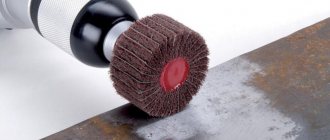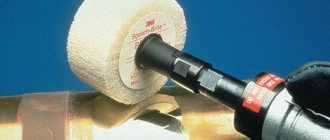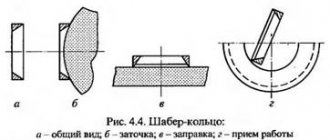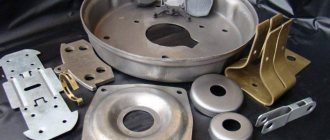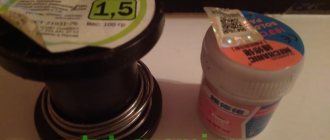Diamond paste is a fine emulsion made from synthetic diamonds. It is widely used for grinding surfaces and rough finishing.
When in contact with a surface, diamond paste, in addition to mechanical effects, also has a chemical effect. Thanks to this, a thin film is formed on the surface, facilitating the uniform distribution of diamonds in the working area.
Thanks to the presence of surface-active additives in the diamond paste, the process of washing parts and removing chips becomes easier. At the same time, as a result of absorption, faster grinding of the material is ensured.
Prices for diamond pastes
| p/p | ASM/ASN | Diamond concentration in carats per 1 kg | Price per 1 kilogram | ||||
| N | P | IN | N | P | IN | ||
| 1 | 60/40 | 400 | 1 000 | 2 000 | 4000 | 10 000 | 20 000 |
| 2 | 40/28 | 400 | 1 000 | 2 000 | 4 000 | 10 000 | 20 000 |
| 3 | 28/20 | 300 | 750 | 1 500 | 3 200 | 7 500 | 15 000 |
| 4 | 20/14 | 300 | 750 | 1 500 | 3 200 | 7 500 | 15 000 |
| 5 | 14/10 | 300 | 750 | 1 500 | 3 200 | 7 500 | 15 000 |
| 6 | 10/7 | 200 | 500 | 1 000 | 2 400 | 5 000 | 10 000 |
| 7 | 7/5 | 200 | 500 | 1 000 | 2 400 | 5 000 | 10 000 |
| 8 | 5/3 | 200 | 500 | 1 000 | 2 400 | 5 000 | 10 000 |
| 9 | 3/2 | 100 | 250 | 500 | 1 500 | 2 500 | 5 000 |
| 10 | 2/1 | 100 | 250 | 500 | 1 500 | 2 500 | 5 000 |
| 11 | 1/0 | 100 | 250 | 500 | 1 500 | 2 500 | 5 000 |
| 12 | 0,5/0 | 100 | 250 | 500 | 1 800 | 3 500 | 7 500 |
| 13 | 0,3/0 | 100 | 250 | 500 | 1 800 | 3 500 | 7 500 |
The price indicated is for 1 kg. Pastes are packaged in 40, 50, 100, 200 and 500 grams. Excluding VAT.
Please check the availability of containers at the time of ordering.
Prices from ten kilograms are agreed upon individually
Elbor paste
| p/p | LM | Ct | Price for 1kg |
| 1 | 60/40 | 400 | 12 000 |
| 2 | 40/28 | 400 | 12 000 |
| 3 | 28/20 | 300 | 10000 |
| 4 | 20/14 | 300 | 10000 |
| 5 | 14/10 | 300 | 10000 |
| 6 | 10/7 | 200 | 6000 |
| 7 | 7/5 | 200 | 6000 |
| 8 | 5/3 | 200 | 6000 |
| 9 | 3/2 | 100 | 3500 |
| 10 | 2/1 | 100 | 3500 |
| 11 | 1/0 | 100 | 3500 |
Contraindications for teeth whitening
Lightening enamel with toothpaste or other means is not recommended for:
- Presence of caries;
- Enamel cracks;
- “Sensitive teeth” syndrome;
- Pregnancy, breastfeeding;
- Installed bridge structures, braces, bite alignment systems.
Whitening is carried out after eliminating the listed contraindications at home - with toothpaste or at the dentist. A doctor's consultation is required before the procedure.
Home enamel lightening is aimed at returning teeth to their natural color, removing tartar deposits and darkening.
Scope of application of diamond pastes by type
| Paste type | Washability | Consistency | Application area |
| G | ABOUT | M | Processing of ferrous and non-ferrous metals, alloys, non-metallic materials, steels and semiconductor materials. |
| L | IN | M | Processing of alloy steels, cast iron. ceramics, cermets, hard alloys, ferrite, sapphire. |
| X | V, VO | M, T | Processing of glass, semiconductor materials, carbide tools, dies. |
| E | IN | M | Processing of glass, semiconductor materials, carbide tools. |
Diamond pastes are produced with different concentrations of diamond powder. The higher the concentration, the higher the processing performance. This is achieved by changing the abrasive ability, i.e. the amount of material ground per unit of time.
Based on the concentration of diamond powder, pastes are divided into:
N
- Pastes of normal concentration
P
- Pastes of increased concentration
B
- Pastes of increased concentration
For convenience, a dye is added to the paste, by which its properties and characteristics (grain size and mass fraction of diamonds) can be determined.
Below is a table of diamond paste colors.
| Paste and label color | Diamond Powder Grit | Mass fraction of diamonds in paste, % | ||
| N | P | IN | ||
| Lilac | 125/100 — 80/63 | 40 | 60 | — |
| Lilac | 63/50, 50/40 | 20 | 40 | — |
| Red | 60/40, 40/28 | 8 | 20 | 40 |
| Blue | 28/20 — 14/10 | 6 | 15 | 30 |
| Green | 10/7 — 5/3 | 4 | 10 | 20 |
| Yellow | 3/2 — 1/0 | 2 | 5 | 10 |
| Does not stain | 1/0,5 — 0,1/0 | 2 | 5 | 10 |
Composition of polishing paste
Diamond polishing paste for metal is formed from special, multi-component powders. The base for them, of course, is synthetic diamonds - A C M and A C H. In addition, surfactants - agents or surface, active substances - are added to the composition. Their role here is very significant and consists in simplifying the process of final washing of metal products after machining. They make it easier to remove accumulated slag and tiny chips, even from hard-to-reach areas of the part. In practice, such processing guarantees maximum surface quality and, as a result, a higher efficiency of the serviced part in the mechanism or equipment.
In addition to synthetic powders (ASM, ACH) and surfactants, diamond paste also contains additional auxiliary substances, including stearin, paraffin, oleic acid, and ceresin.
Mass fraction of diamond powder in diamond pastes
| Diamond Powder Grit | Abrasive ability of paste, mg, not less | ||
| N | P | IN | |
| 60/40 | 67 | 127 | 175 |
| 40/28 | 62 | 123 | 163 |
| 28/20 | 57 | 112 | 157 |
| 20/14 | 52 | 102 | 153 |
| 14/10 | 47 | 97 | 148 |
| 10/7 | 42 | 93 | 143 |
| 7/5 | 37 | 82 | 137 |
| 5/3 | 32 | 65 | 108 |
Whitening Toothpaste Ingredients
- Abrasives - hard particles for removing plaque and dark stains;
- Silicic acid (dioxide) is a hypoallergenic abrasive;
- Calcium carbonate is a coarse abrasive that scratches enamel and has a hard structure. For visible whitening effect.
- Titanium dioxide is a gentle abrasive, added in low proportions;
- Polyethylene - present in the form of balls in economy segment pastes. The use is not recommended due to the risk of abrasive building up in microcracks and further development of bacteria.
- Enzymes are chemical components for breaking down plaque and hard deposits. These are: papain - fruit acid from papaya fruits, which destroys the hard protein structures of deposits; bromelain is a pineapple acid that has a similar principle of action.
- Polyphosphates are substances that remove tartar, but lead to gradual demineralization of the enamel.
- Natural abrasives - clay, carbon (activated, wood), soda.
Composition of lapping paste
The main components of valve grinding pastes are:
- An oil that increases heat capacity and reduces the temperature on ground surfaces. Some pastes are water-based to reduce viscosity.
- Fine abrasive that produces polishing.
- Antioxidant substances that reduce mechanochemical wear.
- Corrosion inhibitors that have a positive effect on valve life.
- Lightening compounds.
The effectiveness of any valve lapping paste is determined by the type of abrasive. Carborundum, diamond chips, silicon dioxide, glass, aluminum oxide, as well as silicon and boron carbides are used.
Valve lapping paste is classified from coarse to fine. In coarse-grained paste, the abrasive particles are quite large, so it is used for rough grinding. The higher the grain size of the lapping paste, the finer the lapping it can perform.
Oil and abrasive paste have opposite functions: while the abrasive increases friction, the oil tends to reduce it, limiting the cutting force at the same time. Oil (or water) is also the basis in which abrasive particles move during lapping.
Some users arbitrarily reduce the initial viscosity of the paste, which is unacceptable: as a result, the loading force and cutting effect of abrasive particles on the ground surfaces are reduced. The particles themselves are washed out faster, which leads to an increase in the consumption of the lapping compound.
Paste for grinding valves. Which is better?
The rating of pastes below is compiled primarily based on reviews from car enthusiasts themselves:
- “Classical” (manufacturer VMPAvto, Russia). Suitable for all types of engines, it has a two-component composition, which allows for consistent coarse and fine lapping. The grain size is from 0.53 to 0.9 microns, and they begin to work gradually, as the roughness of the treated surfaces changes. The asking price is from 600 rubles. for 400 g of product. Note that VMPAauto produces highly specialized pastes under the same brand - diamond and professional, which are suitable only for diesel and gasoline engines, respectively. The price of such pastes is higher: for example, for diamond – from 220 rubles. per package 100 g.
- ABRO Grinding Paste GP-201 from the ABRO brand (USA). It also contains coarse and fine-grained components, which are located in separate parts of the container. Economical in consumption, holds well on the surface being rubbed. The price of a package weighing 100 g is from 150 rubles.
- Effect (produced in St. Petersburg). The packaging includes two bottles with coarse and fine-grained paste, as well as a dispenser to facilitate the grinding process. Price – from 160 rub. for 90 g of product.
- Permatex (manufacturer - USA). It belongs to the group of compound water-soluble pastes, with which you can not only grind valves, but also clean chrome surfaces of a car. Price – from 550 rub. per package.
It should be noted that the division of lapping pastes into professional and amateur is quite arbitrary, and is expressed only in the volume of a single product package.
A brick-colored paste containing an abrasive close in hardness to diamond.
Suitable for diesel and high-hardness parts.
Flow – Only 0.2 g per valve. Grinding in time 2 min, Tightness -0.75 atm
After using abrasive paste, we recommend using FABO paste.
The valves ensure the tightness of the combustion chamber. The tightness must be 100%. This can be achieved by creating an ideal fit between the valve and the seat.
How do our lapping pastes help achieve this result?
Comparison of whitening toothpastes
The table below presents a comparative description of whitening compositions for cleaning teeth.
| The product's name | Blend-a-med 3D White Luxe | Colgate Optical White | White Glo |
| Manufacturer | Germany | China | Australia |
| RDA index | 205 | not specified | 110 |
| Active substances | glycerin, silicon dioxide, sodium hexametaphosphate, sodium lauryl sulfate, cocamidopropyl betaine, trisodium phosphate | hydrated silica, sorbitol, glycerin, tetrapotassium pyrophosphate, sodium lauryl sulfate | calcium carbonate, sorbitol, glycerin, silicon dioxide, sodium lauryl sulfate, carboxymethyl hydroxyethylcellulose, carrageenan, titanium dioxide |
| Whitening type | superficial | superficial | superficial |
| Whitening result | 1-1.5 tones | 1-1.5 tones | 1-1.5 tones |
| Price for 100 ml: (rub.) | 180 | 219 | 215 |
| The product's name | Lion Zact | Perioe Pumping Whitening | Splat Professional White Plus |
| Manufacturer | South Korea | South Korea | Russia |
| RDA index | not specified | 100 | 150 |
| Active substances | Calcium hydrogen phosphate, aluminum oxide (cleaning/polishing agent) | glycerin, hydrated silica, sodium lauryl sulfate | hydrogenated starch hydrolysate, hydrated silica, potassium nitrate, dicalcium phosphate dihydrate, calcium pyrophosphate, pentasodium triphosphate |
| Whitening type | deep | deep | superficial |
| Whitening result | 2-3 tones | 2-3 tones | 1-1.5 tones |
| Price for 100 ml: (rub.) | 582 | 529 | 168 |
An independent survey of 40 medical students was conducted on the website survio.com, which revealed the three most popular brands of whitening pastes:
- Colgate - effect after a month of use: enamel whitening by 2-3 tones; safe for teeth and gums if you follow the manufacturer's recommendations.
- Splat Extreme White, ROCS PRO (contain carbamide peroxide) - whitening by 2-3 tones in 2-30 days;
- Colgate “Comprehensive Whitening”, ROCS “Sensational Whitening”, Splat “Whitening Plus” (based on abrasives, fruit enzymes) - whitening by 1-2 tones in 30-60 days.
Before choosing a whitening toothpaste
- go to the dentist to assess the condition of your teeth;
- make sure there are no contraindications;
- study the composition.
The dentist will conduct an examination and examination, help you decide on the method of teeth whitening and cleaning; The doctor will suggest toothpaste, an enamel whitening system at home, or chemical whitening in a dental clinic, depending on the condition of the patient’s teeth.
Home whitening is carried out in courses that include daily brushing of teeth with whitening paste 2 times a day for 30 days. The course can be extended for a specified period if there is no result. After a course of whitening, a break should be taken for a period of at least a month, during which the patient is recommended to use products containing active ingredients for the remineralization of tooth enamel.
The use of abrasive toothpastes allows you to lighten the enamel by 1-1.5 tones by removing plaque. Chemical whitening pastes based on urea dioxide demonstrate the effectiveness of whitening by 2-3 shades. The compositions are used in dentistry in professional teeth whitening systems.
